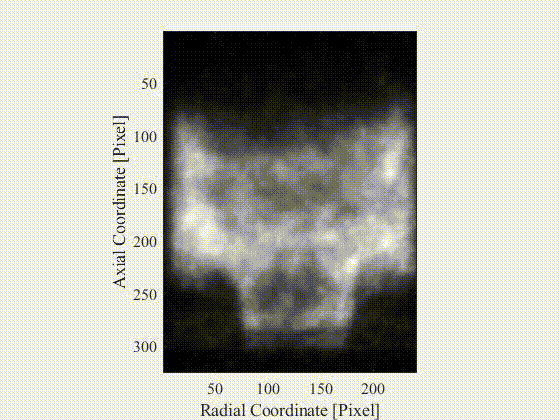This article is a part of Climate Action at Penn State, a blog highlighting climate solutions, research, and other efforts at Penn State.
In our lab, the Reacting Flow Dynamics Laboratory, we focus on issues of reacting flows in engines for energy and transportation applications. We have a particular focus on engine combustion and the dynamics of flow fields, which are the pathways that air takes through an engine to mix with fuel and ultimately combust. It's critical to study the flow dynamics because if you don't get them right, your combustion will either be much less efficient or much less stable, both of which are bad for an engine’s operations.
The goal of our lab’s work is to understand the fundamental issues that have been distilled from real-world technologies. Study of these fundamental problems helps to bridge the gap between real-world technological issues and university-level, fundamental research. Several of these unit problems have a direct impact on the emissions and efficiency of everyday engine technologies, including both spark-ignition and compression-ignition piston engines as well as gas turbines for both aircraft and power-generation applications. We use a range of laser diagnostics to probe processes inside flames to understand issues that could impede the performance and efficiency of these devices.
Much of the work we do in the lab focuses on the issue of combustion instability, which is one of the most pressing issues in low-emissions gas turbine combustors. These engines are critical components of our energy infrastructure. Large combined-cycle plants can reach thermal efficiencies greater than 62%, which is one of the most efficient uses of natural gas fuel for power. Smaller gas turbines play an important role in electrical-grid load balancing, picking up the slack when renewable energy source output drops or demand increases.
In order to achieve these critical roles on the grid efficiently and cleanly, the combustor must be operated at a lower flame temperature, which makes the flame susceptible to instability. Combustion instability occurs when heat release rate fluctuations combine with combustor acoustics in a feedback loop. This manifests as high-intensity sound in the engine. These acoustic pressure oscillations are undesirable because they increase the emissions from the engine, and in the worst-case, cause catastrophic hardware failure from rapid fatigue loading. Figure 1 shows a high-speed movie comparison of a stable flame (Figure 1a) and an unstable flame (Figure 1b), which displays large-scale oscillations. In our lab, we research many ways to suppress this instability while maintaining emissions and efficiency of the engine.

Figure 1a

Figure 1b
Stable, efficient, and clean gas turbines have an important role to play in addressing climate change in two ways. First, everything we can do to increase the efficiency of these engines, including suppressing combustion instability, results in lower carbon dioxide emissions for the same power output. Additionally, instability can also result in the emission of other toxic and greenhouse pollutants like nitrous oxide, carbon monoxide, and unburned hydrocarbons, and so suppressing instability is important for a number of reasons.
Second, gas turbines currently play an important role in complementing the new additions of renewable energy (like wind and solar) on the electrical grid. Gas turbines are high-efficiency, fast-response “peaker” plants that help to balance the short time-scale variations in user demand and renewable power on a grid. With our current electrical infrastructure, gas turbines work hand-in-hand with renewables to ensure reliable and clean power for millions across the United States and the world.
For more details on this research and other projects at the RFDL and to see author pre-print copies of any of the work discussed here, please visit our website at https://sites.psu.edu/rfdl/ and follow us on Twitter @RFDL17.


